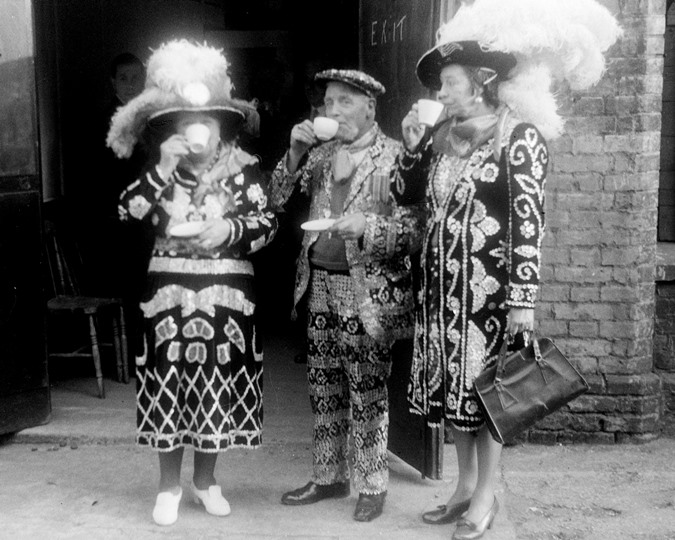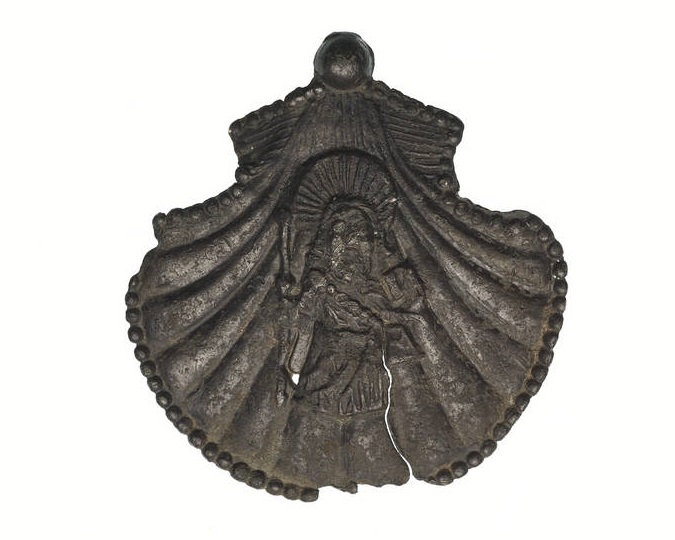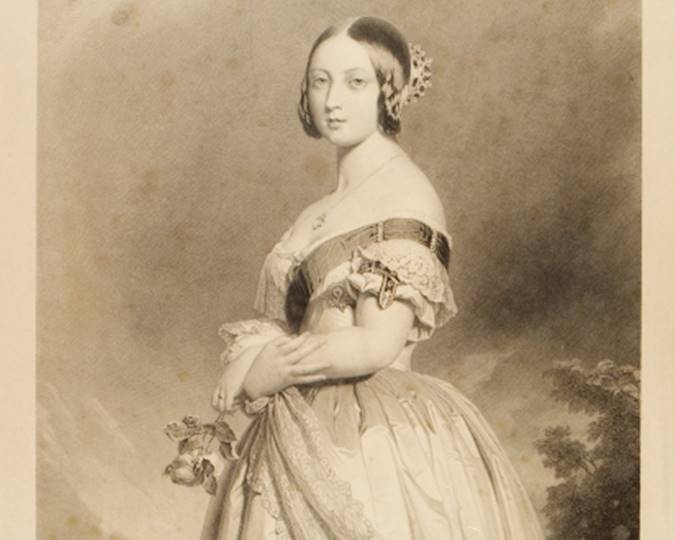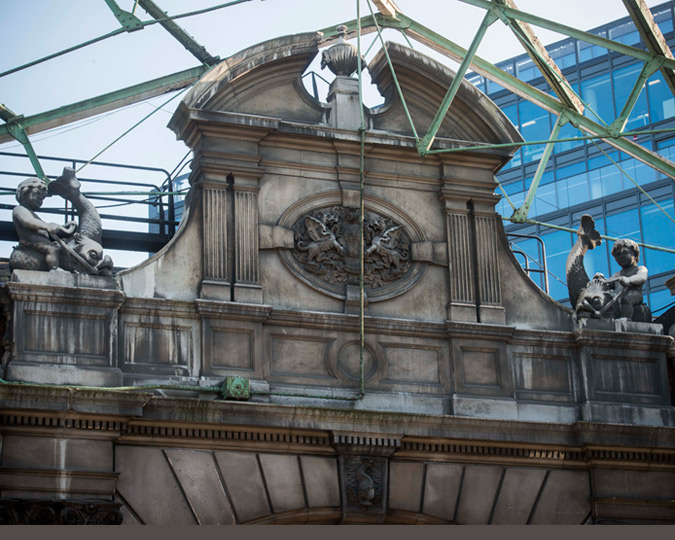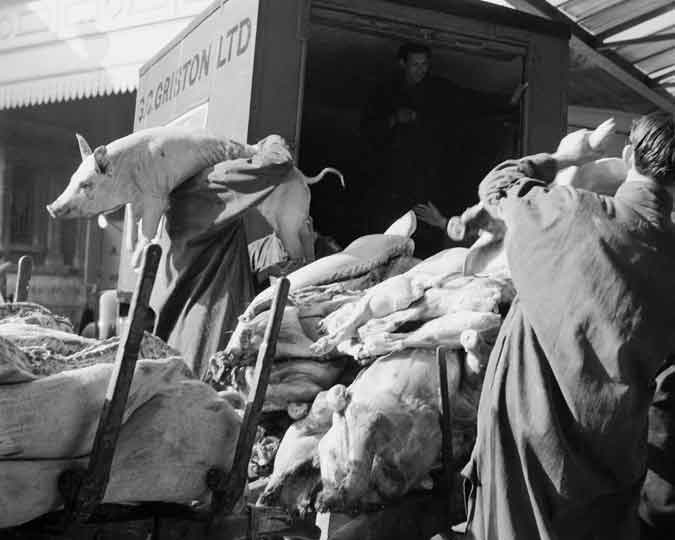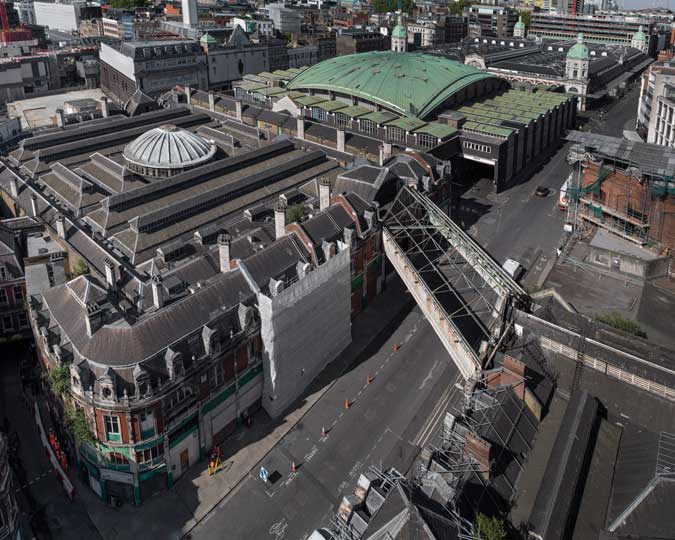Uncover the rich history of Smithfield Market, London's iconic trading hub – executions, underground railways, war shelters and hidden Victorian vaults await in this captivating historical journey.
Smithfield Market has long been representative of London’s bustling working and trading life for centuries. As one of the city’s oldest markets – with trading going on for almost a millennium, its history encompasses social and political lore, trading milestones and engineering feats that few similar establishments can claim.
Charles Dickens definitely thought so as he recreated the energy of the market and its livestock traders in his novels. Before that, it was home to the famous Bartholomew Fair, which started in 1123 and continued for 700 years. One of the largest second-hand garment fairs ran alongside the market for several centuries.
Have you ever used the phrase “bull in a China shop”? You might have Smithfield to thank! It’s said that the saying originated from an escaped animal at the market. The River Fleet’s course was turned to make way for the building of this notable structure, and the market was a vital air raid shelter during World War II.
And this is why, it’s only fitting that from 2026 onwards, it be the new home for the Museum of London, which will open under the new name of London Museum.
These are just a few examples of its rich history. And while one article might not do justice to the vibrant history of this iconic market, here’s a teaser with five things about Smithfield Market that you might not know, including a connection with the Sydney Opera House.

A bird’s-eye view of Smithfield Market
A livestock market was established at Smithfield as early as the 10th century. In 1811, when this print was executed, Smithfield – despite being described as a slum – boasted an excellent livestock market. (ID no.: A18115)
1. Smete field – Smoothfield – Smithfield
The name Smithfield is said to come from the medieval word ‘smete field’, which meant ‘smooth field’. Quite appropriate since it referred to the flat grassland it occupied outside the City walls. William Fitzstephen recorded a horse market at Smoothfield as far back as the 12th century. During the medieval period, this expanded into an open-air market selling livestock. Due to the livestock market, more manufacturers and traders moved to the area, selling diverse goods to the crowds drawn to the area, often using waste products such as bones from butchering animals.
By the mid-19th century, the market had outgrown the space available and residents were objecting to the noise and filth. So, livestock trading was moved out to Highbury/Islington and a new covered wholesale market was built under the directives of Sir Horace Jones (the architect behind Tower Bridge, Billingsgate Market and Leadenhall Market). The state-of-the-art Meat Market opened on 24 November 1868. Other buildings followed: the Poultry, General and Fish markets opened in 1875, 1883 and1887, respectively.
2. A grim history of execution and revolution
People know of Tyburn and the Old Bailey as locations for public executions, but so was Smithfield. The famous Scottish revolutionary William Wallace was hung, drawn and quartered here in 1305. It was also the site of martyrdom during the Reformation; people were tortured and killed here on many occasions. Most of those executed at Smithfield were religious dissenters, particularly during the peak of the Reformation and Counter Reformation in the 16th century. Bartholomew Legate, executed at Smithfield in 1612, was the last person to be burned at the stake in London for religious beliefs. Executions have taken place on at least four occasions between 1538 and 1713.
3. The world's first underground railway
In the heart of London, beneath the bustling Smithfield Market, lies a pioneering feat of engineering – the world's first underground railway. Conceived in the mid-19th century, this subterranean marvel was a testament to Victorian ingenuity and determination. In 1860, construction work started on the Metropolitan Railway. Workers toiled tirelessly, excavating through the dense London clay and paving the way for a revolutionary mode of transportation.
The Smithfield Market Railway, as it was called, was only a quarter of a mile long, but it had a huge influence. When it first opened in 1868, it helped relieve traffic on the city's streets by transporting vegetables and cattle from adjacent train terminals straight into the famed meat market. Employing hydraulic lifts to raise the meat unloaded from railway waggons up to the market floor was also one of the many innovative aspects of this market.
Not only that, the market sits atop a cross-section of three railway lines, one coming from the Chatham and Dover Railway, and another going eastwards.

City bomb damage, Smithfield Market
Damage to Smithfield Market caused by a high explosive bomb at 3am, 11 September 1940. (ID no.: IN6781)
4. An air raid shelter and roof spotting during World War II
Not many know that a disused railway tunnel under the markets was converted into a very excellent air raid shelter during the Second World War, and, in the early raids, was used extensively by market tenants and buyers. The shelter was unoccupied during the daytime, and at night it was used to capacity, with approximately 600 persons from the district sleeping there.
The building was also used by air raid warden posts to keep a lookout, and during the Blitz, the building suffered six direct hits, and the Poultry Market was damaged by a German bomb.
5. What connects Smithfield Market to the Sydney Opera House?
Smithfield Market's architecture showcases remarkable engineering feats that connect it to iconic structures like the Sydney Opera House. After the Poultry Market was destroyed by a fire in 1958, a new building was constructed during 1961–1963. The Poultry Market’s roof – a single-span, unsupported concrete roof – continues to be the largest of its kind in Europe. The structural engineers for the project was Ove Arup and Partners. Many don’t know that this was the same engineering firm that were responsible for the construction of the Sydney Opera House.
Bonus: Secret vaults uncovered
From the roof above to the ground below, we now know that throughout London’s history, the market building and area is steeped in engineering marvels. One such feature was recently rediscovered while work was on to prepare for the new London Museum. On one side of the basement, there was a huge amount of boarding on the wall. A couple of years into the work, the construction crew finally decided to see what was behind it.
Lo and behold, poorly lit, full of rats but magnificent even in the shadows, was a massive network of Victorian brick-lined vaults, stretched out over 800 sq m. These vaults were likely sealed off for several decades before the crew found them. Was it used as storage for perishable goods, providing a cool and stable environment to preserve meats and other commodities? Some speculate that they may have been used for more clandestine purposes, such as secret meetings or covert activities.
It took over a year to clean up the space. The strong arches of these vaults were crucial in supporting the heavy load of earth on Farringdon Road, underscoring, once again, the ingenuity and foresight of Smithfield Market's architects and engineers.
But what next for this unexpected discovery? Looking ahead, the potential uses for the vaults within the new museum are boundless. They could be transformed into interactive exhibits, allowing visitors to explore the sights, sounds, and smells of medieval London first-hand. Alternatively, the vaults could serve as educational spaces, hosting workshops, lectures, and immersive experiences that bring history to life.
What would you do with these vaults? We’d love to hear from you. Tweet out to us @LDN_Museum or give us a shout on Instagram, Facebook or TikTok.
With inputs from Senior Curator of Archaeology Francis Grew, Curator Kate Sumnall and Lead Curator New Museum Alex Werner.
Header image: The Meat Market, Smithfield, at two in the Morning, 15 January 1870. From the bound volume of Illustrated London News for January–June 1870. (ID no.: LIB4774/15)
More about London Museum: The museum’s permanent galleries in the Victorian General Market are due to open in 2026. The 1960s’ Poultry Market, home to the museum’s temporary exhibitions, collection stores and learning centre, is scheduled to open in 2028.
Stay updated about work around the new museum by signing up for our newsletter.

